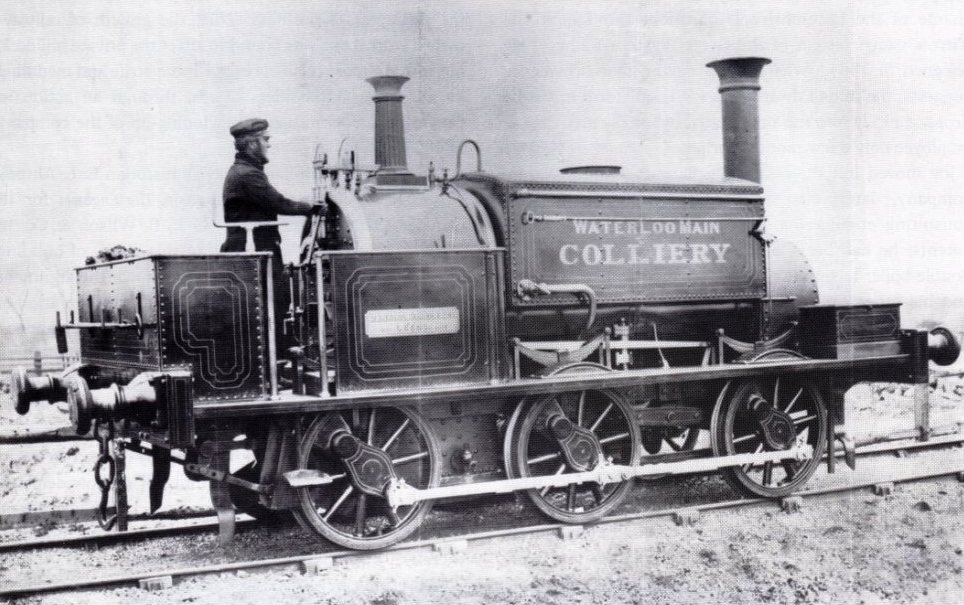
In 1854 in an Alliance with France, Turkey, and Sardinia a British and French force went to war with Russia and in the autumn of that year landed on the Crimean Peninsular to lay siege to the Russian base at Sebastopol.
The winter brought conditions so bad that the soldiers who were dug in around Sebastopol were dying of cold, cholera, and starvation. With all supplies being brought by donkey or by men, the road, hardly more than a track and not wide enough for carts, became impassable. It looked like defeat for the force by weather rather from the enemy.
It was at this point that Thomas Brassey, a millionaire contractor, offered to build a railway from the supply port to the front line. He was joined in this venture by two other contractors, Sir Martin Peto and EL Betts, it also included shipping out men and materials at cost. Initially the line was horse drawn but later steam locomotives ran on the main line and its branches, these totalled 29 miles.
The locomotives used were built at the Railway Foundry, Jack Lane, Hunslet, of Edwin Brown Wilson. ‘Alliance’ was the first of these and was an 0-6-0 six-coupled wheel tank engine built for John Leather, coal owner, and was overhauled and decorated with the flags of the Alliance nations after having been purchased by a Government Agent. A second locomotive, one built for Sir John L Kaye for use at his collieries was purchased and overhauled before being sent to war in the Crimea.
There are a number of firsts here, it is the first recorded mention of a truly industrial locomotive that Hunslet and Leeds became famous for, this was the first time in war that steam locomotives were used to move supplies from a port to the front line and lastly hospital trains were used for the first time to transport casualties.
The story of EB Wilson is quite complex, it begins with Charles Todd who was one of the founders of Todd, Kitson & Laird but left the Company early to join Financier Mr. Shepherd in 1838 to set up the Railway Foundry as Shepherd & Todd but Todd left the partnership in 1844, he was replaced by Edward Brown Wilson who was a member of the Wilson Shipping Line in Hull but he left after only one year. In 1846 Shepherd & Todd were taken over by James Fenton who had been in charge of building the Leeds to Thirsk Railway and the foundry was renamed Fenton, Craven & Company but the partnership ended at the end of 1846.
Edward Brown Wilson was born in Hull in 1818 and in 1839 he married Mary Jane Buckton (1819-1900). Their first child, a son, Ernest Edward Wilson, was born in 1840 and four years later they had a daughter, Ada Mary. Their final child, another daughter, Florence, was born in 1855.
EB Wilson returned to the Company in 1847 taking complete charge and renaming the Company EB Wilson & Company and retaining James Fenton as the works manager. However, many of the maker’s plates retained the name “The Railway Foundry, Leeds”.
The works were expanded with the intention of producing up to 50 a year, Fenton’s boiler design’s were particularly successful, and the company’s products acquired a reputation for workmanship and reliability.
Originally an apprentice at Fenton, Murray & Jackson and later at Shepherd & Todd, David Joy was their Chief Draughtsman and was given the task in 1847 of designing a new engine for the London & Brighton Railway. The first of these was named the ‘Jenny Lind’ and was an immediate success.

There is a controversy as to whether Fenton, Joy, or even Wilson was responsible. It would appear that Joy produced the drawings but Fenton would have needed to approve them. However the success of the engine owed much to the boiler design which worked at 120-PSI, unprecedented at this time. Over 70 engines of this design were built, 24 of which went to the Midland Railway.
The company, besides producing the ‘Jennies’ produced 2-4-0 and 0-6-0 and set out to standardise their designs, they charged a premium for any variation from standard. The Company also produced pumping engines, carriages and wagons, as well as carrying out maintenance work for the Midland Railway, and built a few engines to customers’ own designs.
John Jamieson ran the Marine Engine Department in 1852 to 1854 of the Foundry, but trouble with the leading shareholders caused Edward Wilson to leave the Railway Foundry and Alexander Campbell was then appointed manager (later he was to found Manning, Wardle & Company).
Edward Wilson departed from Leeds in 1856 after the shareholders had won. He seems to have taken up residence at 36 Parliament Street, Westminster in 1858 but in 1861 he is shown as a lodger at 6 Great Ryder Street, Westminster, aged 43. Later he was to die in obscurity in Tonbridge Wells on 21 June 1874 at the early age of 56 years.
A sale by auction of all the equipment and the factory recently used by EB Wilson took place in June 1859, but this was not the end of the Railway Foundry, it was refounded by WS Hudswell and John Clarke in 1860.

This post was written by Ken Burton
Main image: A 0-6-0 tank engine used on the Crimean railway
We encourage anyone living or working in South Leeds to use this website to tell their news. You can either use the Create an article for South Leeds Life page, or email us at: info@southleedslife.com



Excellent information it matchs perfectly in order throw some light about some myths in the history of the beginning of the Argentine Railways because the first Two 2-2.-0 ST locomotives puchased were built by E.B.Wilson and here is a false story about that engines were coming from the Bacalava Railway this article coinfirmas that it’s not true Thanks
The trains for “Bideford Westward Ho! & Appledore Railway” Were built at the Hunslet Engine company They have a f.b. group for anybody interested, They are a bit like our Middleton Light railway but much much smaller.